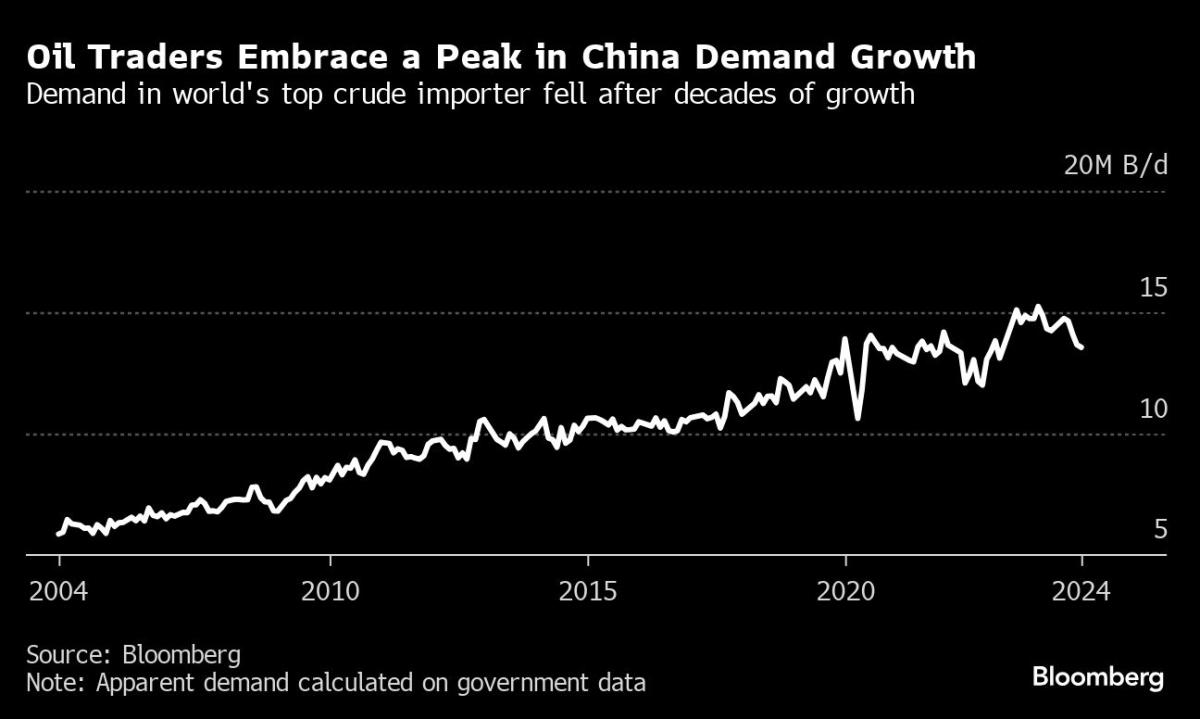China’s Changing Role in Global Crude Demand: A New Era for Oil Traders
For the first time in two decades, the narrative surrounding China as the driving force behind global crude demand is shifting. This transformation has left traders and executives at the Asia Pacific Petroleum Conference (APPEC) in Singapore grappling with the implications of a new reality. The once-reliable engine of oil consumption is now sputtering, raising questions about the future of crude markets.
A Troubling Economic Landscape
China’s economic situation is increasingly precarious. The property market is in a slump, consumer confidence is waning, and the nation is struggling to rebound from the pandemic-induced slowdown. Compounding these issues are structural changes, including an aging population, a transition toward renewable energy, and a growth model that is moving away from large-scale infrastructure projects. These factors collectively spell bad news for oil demand.
Janet Kong, CEO of Hengli Petrochemical International Pte., highlights the challenge for traders who have only known a market buoyed by Chinese demand. “I’ve had the discussion internally with my traders. I asked them one question — how long have you been trading? They’ll say 10 years. My reply is, you haven’t really traded a world where China is not a bullish factor,” she remarked. This sentiment encapsulates the uncertainty that permeates the oil trading community.
Diminished Growth Projections
An informal Bloomberg survey conducted during the APPEC revealed that analysts and traders expect China’s oil consumption to grow by no more than 300,000 barrels a day by 2025. This projection aligns with the International Energy Agency’s (IEA) recent downward revision of its expectations, which contrasts sharply with the more optimistic forecasts from the Organization of the Petroleum Exporting Countries (OPEC). For the current year, a modest increase of 200,000 barrels a day is anticipated.
Several factors contribute to this subdued outlook. The rise of electric vehicles, the increasing adoption of liquefied natural gas-powered trucks, and government restrictions on crude imports and fuel exports are all playing a role. Additionally, China’s strategic oil reserves are nearing capacity, limiting the government’s ability to expand its stockpiles.
A Global Demand Slowdown
The IEA’s monthly report indicates that global oil demand growth is “slowing sharply” as China’s economy cools. Notably, Chinese demand contracted for the fourth consecutive month in July, while fuel consumption in other regions remains lackluster. Analysts from Energy Aspects Ltd. have noted that China is unlikely to regain its status as a dominant force in oil demand, suggesting that the government will strive to prevent economic collapse but that growth will likely remain tepid for the foreseeable future.
The Changing Nature of Oil Demand
Despite the gloomy outlook, some attendees at the APPEC conference pointed to a transformation in the nature of oil demand. Currently, chemical feedstocks account for about one-third of China’s total oil consumption, approximately 5 million barrels a day. As the country shifts towards greener transportation options, this proportion may increase. However, the longer “half-life” of chemical products compared to fuels means that less crude will be refined over time.
While the annual event in Singapore was overshadowed by concerns about China’s economic outlook, it also highlighted ongoing expansions in refining capacity. Projects by major companies like China Petrochemical Corp. and Cnooc Ltd. are set to add a combined 740,000 barrels a day of capacity. Nevertheless, traders and analysts predict that processing rates will remain below 70%.
Diverging Opinions on Future Demand
Not everyone is ready to declare a peak in Chinese fossil fuel consumption. Saad Rahim, Chief Economist at Trafigura Group, points out that China continues to add millions of new combustion engine vehicles each year, suggesting that the demand for oil may not have reached its zenith. Others, like Sri Paravaikkarasu from Phillips 66 International Trading, acknowledge the potential for growth but emphasize the need to adjust expectations for slower demand growth in the coming years.
Conclusion: Navigating Uncertain Waters
As China grapples with its economic challenges, the implications for global crude demand are profound. Traders and analysts must recalibrate their strategies in a landscape where the once-reliable Chinese market is no longer a guaranteed driver of growth. While there are still opportunities for demand recovery, the consensus is clear: the era of robust Chinese oil consumption is evolving, and stakeholders must adapt to this new reality.
With Brent crude prices hovering around $71 and the world’s second-largest economy showing few signs of a swift recovery, the oil market stands at a crossroads. The coming years will require agility and foresight as traders navigate these uncharted waters, seeking to understand the implications of a changing China on global crude demand.


